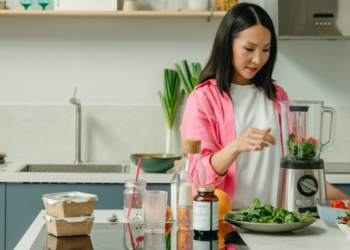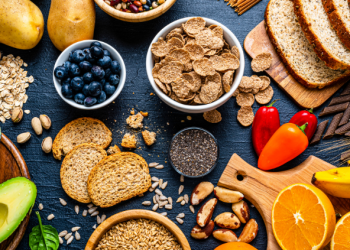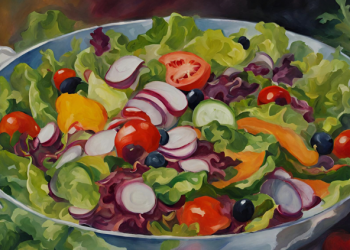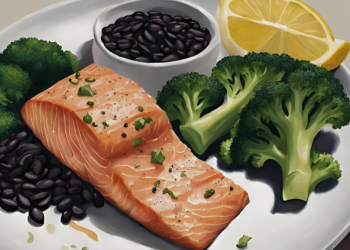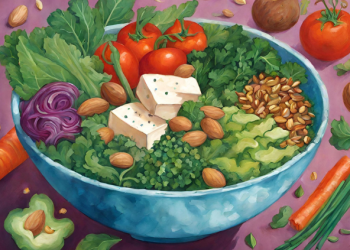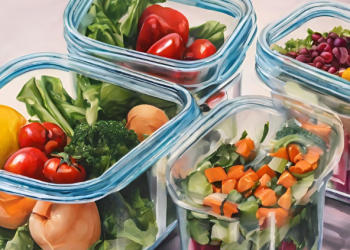Health for the Holidays: Transforming Traditional Recipes with Expert Guidance

This blog is part of our Gratitude & Reflection newsletter. If you like this content, sign up here to receive our monthly newsletter!
As the holiday season approaches, many of us eagerly anticipate the joyous moments of togetherness, gift-giving, and, of course, indulging in mouthwatering dishes that have become synonymous with holiday celebrations. Whether it’s grandma’s famous pecan pie or Aunt Sally’s stuffing, these cherished holiday recipes bring with them a comforting sense of nostalgia that warms our hearts. However, there’s no denying that the generous spreads served during the holidays can take a toll on our health.
The good news is that you don’t have to sacrifice taste and tradition to make your holiday feasts healthier. In fact, we at Stanford Lifestyle Medicine believe it’s possible to transform your beloved recipes into delicious versions that nourish your body.
We also recognize the significance of celebrating the season with the foods we love. Our mission is to bridge the gap between these two priorities, demonstrating that health-conscious recipes can not only reduce sugar, cut down on saturated fats, and enhance nutritional value but also deliver flavors that rival the indulgent classics.
In this blog, we will provide you with expert insights, trusted recipes, and innovative ingredient swaps that will empower you to make healthy choices while still savoring the essence of the season.
Holiday Recipe Recommendations from a Physician Chef
c
xxx
Dr. Carlie Arbaugh is a Stanford surgical resident, chef, and member of our Healthful Nutrition Pillar. After graduating from Cornell University with a BS in Human Biology, Health and Society she attended medical school at Stanford School of Medicine and gained professional certifications in Plant-Based Nutrition and Culinary Arts. Dr. Arbaugh firmly believes that food plays a fundamental role in our health, community, and culture. This passion drives her commitment to exploring the harmonious blend of deliciousness and nutritiousness in our food choices. Delve deeper into Dr. Arbaugh’s expertise as she shares her recipe recommendations and ingredient swaps for the upcoming holiday season.
c
Stuffed Mushrooms
“For the past two holiday seasons, I’ve been whipping up a delightful dish that everyone has loved – stuffed mushrooms,” says Dr. Arbaugh. “Whether served as an appetizer or a side, it’s a naturally vegetarian gem, with the flexibility to go fully vegan. What’s more, it’s a breeze to prepare, requiring just a handful of simple ingredients.”
Dr. Arbaugh follows the New York Times Cooking recipe, making a healthy tweak by swapping out the butter for vegan butter or olive oil.
“In general, mushrooms stand as a healthful, naturally plant-based meat alternative, thanks to their ability to deliver that irresistible umami flavor!” she emphasizes.
Quinoa Stuffing
Dr. Arbaugh also recommends swapping traditional stuffing for quinoa stuffing.
“It’s a nice whole grain alternative to stuffing made with bread (especially white bread) and you can boost the nutritional value and flavor by adding seasonal veggies, nuts, and dried fruits,” she states.
There are numerous recipes out there, including the nutrient-rich and fiber-packed creation found on Allrecipes.
Roasted Vegetables
“A simple way to add more plants to your holiday spread is by roasting some seasonal vegetables with a sprinkle of spices and herbs,” says Dr. Arbaugh.
A go-to favorite for Dr. Arbaugh is roasted butternut squash, like this example by Well Plated. Tossed with maple syrup, cinnamon, and rosemary, this recipe is infused with holiday flavor.
Seasonal Fruit Crisp
Seasonal fruit crisps and crumbles are another holiday favorite of Dr. Arbaugh. “Crisps and crumbles are a wonderful holiday dessert as they are primarily fresh fruit and use less flour, butter, eggs, and sugar than you would find in a cake or cookie,” she states.
When possible, Dr. Arbaugh recommends choosing fruits and vegetables that are in season. “Many people don’t actually know what is truly in season because so many of our grocery stores provide a lot of the same produce year-round and transport it in from other geographic locations,” she states. “Seasonal produce is often harvested at its peak ripeness, ensuring maximum nutrient content and flavor.”
Seasonal produce can vary across different regions of the US due to the range in climates. There are many online resources that can be used to track this information. For Bay Area residents, Dr. Arbaugh recommends the San Francisco Environment Department website.
Plant-Based Recipes From a Stanford Food Researcher
c
Jessica Hope, MSN, NP is a passionate advocate of plant-based diets, an impactful nutrition researcher at Stanford University, and integral member of our Healthful Nutrition Pillar. After studying at Princeton University, she gained her master’s at Vanderbilt University School of Nursing and became a nurse practitioner for the abortion clinic at Planned Parenthood in San Mateo. She went on to conduct nutrition research at the Stanford Prevention Research Center, the Division of Immunology & Rheumatology, and now at the Humane & Sustainable Food Lab where she serves as the research coordinator. Continue reading to discover Hope’s expert tips on crafting a more plant-based holiday spread.
c
c
Hope’s Family Recipe for Mashed Potatoes
Hope’s mashed potato recipe, a cherished family favorite each year, stands out for its ease and health-conscious approach. “This simple recipe is not only beginner-friendly but prioritizes health,” she says.“These are great leftovers, too, so I always make as much as I can fit into my biggest pot.”
Hope also recommends mashing the potatoes by hand using a real potato masher for the best results. “To enhance the nutritional content and minimize the impact on blood sugar levels, try leaving the potato skins on as they add fiber and contribute to a more interesting texture and flavor,” she says.
Ingredients
- Golden/yellow organic potatoes
- Unsweetened organic soy milk (I prefer Silk brand)
- Salt
- Organic Earth Balance butter (either sticks or whipped is fine)
- Freshly ground pepper, optional
- Fresh organic parsley, finely chopped, optional, for garnish
Directions
- Use a sharp knife to cut the larger potatoes into 6 pieces and the smaller ones into quarters. Put as many as you want to cook (my Aunt Emily’s recommendation was 2 potatoes per person) into a heavy pot. Then add enough water to just barely cover the top layer of potatoes. Bring to a boil. After it starts boiling, put a lid on the pot and turn the heat down to a lively simmer.
- Gather your other ingredients, and recruit someone with strong arms (in our family, my son is the designated masher). You’ll have enough time to set the table and/or get started on another dish.
- Keep an eye on the potatoes. You want to cook them until they are very tender when poked with a fork, but not so long that they start to fall apart. When they reach that point, drain out the water.
- Keep the potatoes in that same hot pot on the stove, but with the heat turned off. Immediately add Earth Balance butter. The amount is up to you; imagine how much butter you’d want on a small potato and then multiply that by the number of potatoes you used. Immediately begin mashing. After a minute, add only enough milk to moisten the potatoes so that they are easier to mash. Add a little salt, and pepper if using. After mashing for a while, it’s fine to add a little more milk if necessary to get the consistency you like.
- Once the potatoes are fairly smooth, taste to see if they need more butter, salt, or pepper. After transfering to a pretty serving bowl, top with a tiny bit of chopped parsley if desired. Enjoy!
The only caution Hope has with this vegan recipe is related to one ingredient—Earth Balance vegan butter. “While it is a healthier alternative to cow’s butter because it contains zero cholesterol and only half as much saturated fat, it is still equally high in calories and is not a whole food,” she says.
Healthy Sweet Potato Swaps
Hope recommends using your go-to sweet potato recipes as a starting point for incorporating healthy ingredient swaps.
“Most sweet potato dishes can smoothly transition to whole-food plant-based versions that still maintain the flavor of your family’s traditional holiday recipe,” she states.
Explore Hope’s suggestions below for ingredient swaps that can seamlessly replace traditional components.
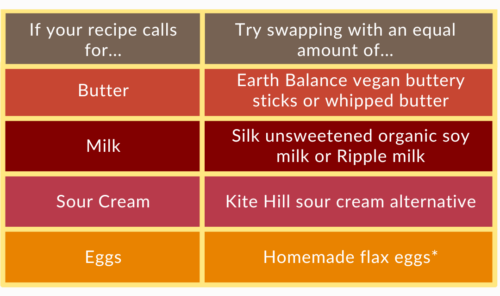
* To make homemade flax eggs, Hope recommends using the recipe from Minimalist Baker.
Pumpkin Pie Cups
Hope enthusiastically endorses the dessert creations by Feasting on Fruit, especially their six-ingredient pumpkin pie cups. The almond flour crust caters to a grain-free lifestyle, and the sweet potato and pumpkin provide fiber and beta-carotene. Additionally, the simplicity of the recipe ensures a hassle-free preparation while maintaining a focus on wholesome ingredients.
More Resources
For more recipe inspiration, Hope recommends the three-course vegan and gluten-free holiday menu from Oh She Glows.






